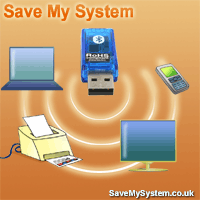Land surveying is a technique in which professionals look at land and identify accurately the three dimensional positions of points and the distances between them. This is often used in order to calculate the data needed for maps, and in order to set boundaries of ownership. It can also be used for general mapping and there are many land surveying initiatives run by the government.
The ability to use the GPS tracking system to find your phone is a great help, especially if you are one of those people who are always putting it down and forgetting where you left it. The other advantage with being able to track down your phone (or anyone else's for that matter) is that you can effectively convert your mobile into a GPS tracking device.
Another definition for land surveyors is supplied by the American Congress on Surveying and Mapping (also known as ACSM). Here it is described as the science or art of making the measurements needed to determine relative positions of points and cultural details on the surface or below the surface of the Earth, and the ability to depict them in a readable format. In other words then surveyors are used to create all kinds of maps and information regarding a piece of land in three dimensions for access by a range of different services.
Increased security measures are another by-product of having a GPS tracker on your mobile phone. Downloading one of the many tracking programs can effectively LoJack your phone, making it simple to find and difficult for someone stealing it to put it to use.
The initial version of the embryonic system was called Navstar-GPS, which later became abbreviated to GPS and was made fully available to civil authorities after the 1983 shooting down of a Korean domestic aircraft which strayed into USSR airspace.
By 1993 the last of the 24 modern satellites were in orbit and the GPS tracking system was fully operational. Initially the system was a two-step one, with more accurate positioning of up to 20 metres available for military use, while the civilian GPS system was only accurate for up to 100 meters. In 2000 the limiting "selective availability" capability was switched off, giving everyone access to the more accurate GPS facility.
Triangulation is in fact a method that has previously been used in surveying, but thanks to GPS surveying it is now incredibly easy and has been made largely obsolete. Of course GPS can make many aspects of surveying much easier, but likewise it is surveying that makes GPS possible.
The ability to use the GPS tracking system to find your phone is a great help, especially if you are one of those people who are always putting it down and forgetting where you left it. The other advantage with being able to track down your phone (or anyone else's for that matter) is that you can effectively convert your mobile into a GPS tracking device.
Another definition for land surveyors is supplied by the American Congress on Surveying and Mapping (also known as ACSM). Here it is described as the science or art of making the measurements needed to determine relative positions of points and cultural details on the surface or below the surface of the Earth, and the ability to depict them in a readable format. In other words then surveyors are used to create all kinds of maps and information regarding a piece of land in three dimensions for access by a range of different services.
Increased security measures are another by-product of having a GPS tracker on your mobile phone. Downloading one of the many tracking programs can effectively LoJack your phone, making it simple to find and difficult for someone stealing it to put it to use.
The initial version of the embryonic system was called Navstar-GPS, which later became abbreviated to GPS and was made fully available to civil authorities after the 1983 shooting down of a Korean domestic aircraft which strayed into USSR airspace.
By 1993 the last of the 24 modern satellites were in orbit and the GPS tracking system was fully operational. Initially the system was a two-step one, with more accurate positioning of up to 20 metres available for military use, while the civilian GPS system was only accurate for up to 100 meters. In 2000 the limiting "selective availability" capability was switched off, giving everyone access to the more accurate GPS facility.
Triangulation is in fact a method that has previously been used in surveying, but thanks to GPS surveying it is now incredibly easy and has been made largely obsolete. Of course GPS can make many aspects of surveying much easier, but likewise it is surveying that makes GPS possible.

No comments:
Post a Comment